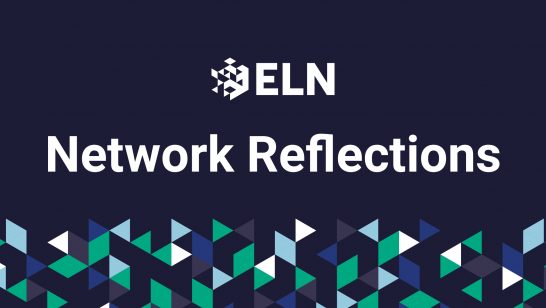
Ms. Sørensen also wrote an earlier piece for the Atomic Reporters in August 2023 on youth empowerment in the nuclear disarmament field which this piece expands on.
“Where are the disarmament youth? Why don’t young people care about nuclear policy?” These sentiments are often espoused by older generations, marked by their experiences of living through the Cold War, thinly escaping near-miss events like the near-catastrophic Cuban Missile Crisis, and who have since dedicated their lives to nuclear abolition. “Why are young people only interested in climate action?” is another cause of bewilderment for various members of the nuclear disarmament field and is the regular follow-up to the initial complaint concerning the disengagement of young people in this field.
Such sentiments are shared by many, and a troubling and misinformed discourse is rising. A recent article in Politico, titled The Dangerous and Frightening Disappearance of the Nuclear Expert, frames young people’s lack of involvement in the nuclear weapons-related sphere as an agency problem. In the article, Rose Gottemoeller, former deputy-secretary of NATO and a leading U.S. arms control negotiator, claims that compared to other existential threats, “…young people aren’t as interested in them [nuclear threats] …”. There have been shifting security priorities, and funding limitations do have an effect in stymying young people’s engagement in the sector. However, the notion that youth are indifferent to nuclear disarmament is highly misleading.
Young people are deeply concerned and engaged in nuclear disarmament and have been bringing their own seats to the table. Among them are members of Youth for the Treaty on the Prohibition of Nuclear Weapons (Youth4TPNW), Youth Fusion, Nyuklia Eureka, Reverse the Trend, and Demilitarise Education, to name but a few. However, the challenges they face in achieving genuine inclusion and long-term sustainability in this field are formidable, with countless barriers to access combined with a severe shortage of financial support.
Young people are deeply concerned and engaged in nuclear disarmament and have been bringing their own seats to the table. Michaela Higgins Sørensen
Over a personal conversation online, Cristopher Cruz Colorado, the co-founder of Nuclear Free Schools, weighed in on the aforementioned Politico article by stating, “saying that no new nuclear experts are being cultivated while interviewing the same individuals responsible for installing barriers to access in the field is incredibly disingenuous to me.” Cruz adds another layer to this discussion from his own personal experience by sharing, “It stings me to hear this when I was scoffed at in Los Angeles for aspiring to be a nuclear policy expert instead of other careers my [Latin] culture is pressured to adhere to, like practising law or medicine.”
The NPT Prep Com in Vienna this past August, attended by the UNODA’s #Leaders4Tomorrow and other youth stakeholders, illuminated the incredible energy and determination exhibited by young, aspiring catalysts for change. However, it also brought to the forefront the systemic obstacles that persist in the nuclear disarmament field, which risk diminishing young people’s potential by inducing burnout, grappling with inadequate compensation, or, in many cases, no compensation at all.
During the NPT Prep Com, I had many conversations with young people regarding their place in the field. One in particular shared such sentiments in between attending side events. “Youth are a key demographic in the diversity checklist sought after by organisations and governments alike, but often thought of as too expensive to initially foster or give a paid placement to”, Vanessa Lanteigne, a Rotary Peace Fellow at the University of Uppsala representing PNND at the NPT Prep Com explained. “Youth are praised and given a chair on prestigious panels, but oft overlooked are the logistics undertaken by these youths to get there. Many youths in the nuclear disarmament field are self-funded, have two jobs, and worked or are working unpaid internships, and by the time they are competent enough in the field, they are branded as ‘youths’ but are ageing out of that category altogether.”
Many youths in the nuclear disarmament field are self-funded, have two jobs, and worked or are working unpaid internships, and by the time they are competent enough in the field, they are branded as ‘youths’ but are ageing out of that category altogether.
Lanteigne paints an image of youth exploitation that many young people are pressured to endure just to get a foot in the door. “The programmes that foster youth leadership are an opportunity that one can be incredibly grateful for but also feel bittersweet towards as the unique experiences, technical policy knowledge and skills acquired don’t seem to lend themselves easily to a mid-level, financially secure career placement”, concludes Lanteigne, outlining the dead-end many youths find themselves in after investing so much in a field that doesn’t seem to be able to repay them.
The nuclear disarmament space benefits from a much-needed revitalisation when young advocates for nuclear disarmament infuse it with renewed determination and vigour. In any nuclear disarmament conference, one can observe the lively engagement of young people as they walk the corridors, contribute to various panels, serve as delegates for their countries or NGOs, collaborate, and endeavour to assert their role in creating a more secure and sustainable future for all.
With genuine youth involvement comes new ways of thinking, emphasising intersectional, interdisciplinary, human security, and multicultural, inclusive thinking while operating between vast networks of potential change-makers worldwide. Young people are organised. Moreover, young people are not maimed by the Cold War and have less baggage to carry than older generations, who tend to prioritise the nation-state and traditional security above all else. However, only a fortunate handful have managed to successfully carve a path forward and transform this pursuit into a sustainable livelihood. Among them are beneficiaries of significant privileges that enable such opportunities and are mainly from the Global North, which comes with advantageous passport freedoms.
With genuine youth involvement comes new ways of thinking, emphasising intersectional, interdisciplinary, human security, and multicultural, inclusive thinking while operating between vast networks of potential change-makers worldwide. Michaela Higgins Sørensen
The sustainability of young people’s presence in this space is shaky due to the much-felt scarcity of financial support. While some youth engagement efforts are funded, the overall structure of the nuclear disarmament field fails to provide a sustainable path forward. In a world marked by economic insecurity and escalating inflation, expecting young individuals to bear the brunt of financial burdens to remain active in a field that urgently requires their input is not just unrealistic but entirely unsustainable. Young, educated, and experienced professionals cannot afford to continue their work if they do not receive a liveable wage. Alas, if youths are not being financially compensated, they are not being empowered. They are being exploited.
Such impediments to youth engagement in this field are a hurdle few overcome, and blaming young people’s perceived lack of interest in nuclear disarmament is a misguided assessment that only serves to deflect from underlying structural insufficiencies. Within intergovernmental institutions, such as the United Nations, that champion the values of inclusivity and diversity, it is demoralising to witness the absence of young representatives. However, this phenomenon isn’t rooted in a lack of interest or aptitude. It stems from systemic issues, such as unpaid internships in expensive major cities like New York and Geneva, requiring young people to fund their moving, travel, and living costs for up to six months. For the average young person, this is infeasible. Thus, attributing the lack of nuclear disarmament experts solely to the youth is an unacceptable solution.
Young, educated, and experienced professionals cannot afford to continue their work if they do not receive a liveable wage. Alas, if youths are not being financially compensated, they are not being empowered. They are being exploited... The nuclear disarmament field needs young people, and it is high time that they are taken seriously and treated better. Michaela Higgins Sørensen
Instead of pondering the whereabouts of young experts and advocates in the nuclear disarmament field, the focus should shift to creating the spaces that properly foster their personal growth and ensure they can pursue their passion for disarmament whilst living comfortably. This is an urgent need as young people are set to inherit a hopeless future, faced with multiple ongoing wars and nuclear threats. Young people should not have to pay for the consequences of the past generation’s choices, and deserve a place at the decision-making table. The nuclear disarmament field needs young people, and it is high time that they are taken seriously and treated better.
The opinions articulated above represent the views of the author(s) and do not necessarily reflect the position of the European Leadership Network or any of its members. The ELN’s aim is to encourage debates that will help develop Europe’s capacity to address the pressing foreign, defence, and security policy challenges of our time.
Image credit: Michaela Higgins Sørensen



